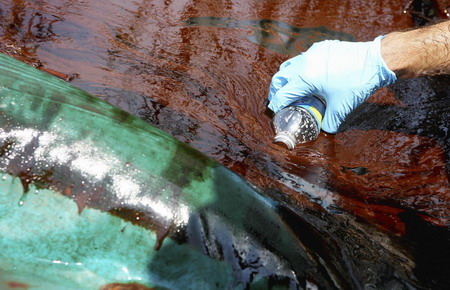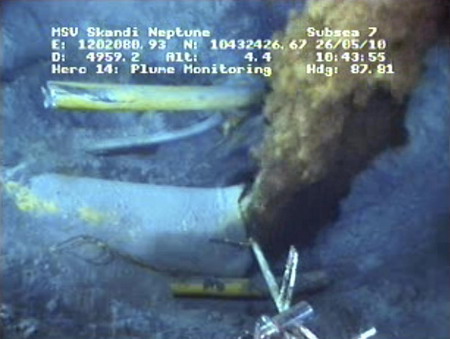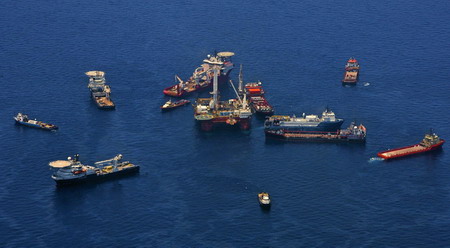Asia-Pacific
Gulf leak eclipses Exxon Valdez as worst US spill
(Agencies)
Updated: 2010-05-28 10:24
 |
Large Medium Small |
|
|
ROBERT, Louisiana -- As BP labored for a second day Thursday to choke off the leak at the bottom of the Gulf of Mexico, dire new government estimates showed the disaster has easily eclipsed the Exxon Valdez as the biggest oil spill in US history.
The company announced late in the day that it had suspended shooting heavy drilling mud into the blown-out well 5,000 feet (1,520 meters) underwater around midnight Wednesday so it could assess how the effort was working and bring in more materials.
As the world waited, President Barack Obama announced major new restrictions on drilling projects, and the head of the federal agency that regulates the industry resigned under pressure, becoming the highest-ranking political casualty of the crisis so far.
BP insisted the top kill was progressing as planned, though the company acknowledged drilling mud was escaping from the broken pipe along with the leaking crude.
"The fact that we had a bunch of mud going up the riser isn't ideal but it's not necessarily indicative of a problem," said spokesman Tom Mueller.
Early on Thursday, officials said the process was going well, but later in the day they announced pumping had been suspended 16 hours earlier. BP did not characterize the suspension as a setback, and Eric Smith, associate director of the Tulane Energy Institute, said the move did not indicate the top kill had failed.
"The good news is that they pumped in up to 65 barrels a minute and the thing didn't blow apart," Smith said. "It's taken the most pressure it needs to see and it's held together."
The top kill is the latest in a string of attempts to stop the oil that has been spewing since the drilling rig Deepwater Horizon exploded April 20. Eleven workers were killed.
|
|
If the procedure works, BP will inject cement into the well to seal it permanently. If it doesn't, the company has a number of backup plans. Either way, crews will continue to drill two relief wells, considered the only surefire way to stop the leak.
A top kill has never been attempted before so deep underwater. BP Chief Operating Officer Doug Suttles said the company is also considering shooting small, dense rubber balls or assorted junk such as golf balls and rubber scraps to stop up a crippled five-story piece of equipment known as a blowout preventer to keep the mud from escaping.
The stakes were higher than ever as public frustration over the spill grew and a team of government scientists said the oil has been flowing at a rate 2 to five times higher than what BP and the Coast Guard previously estimated.
Two teams of scientists calculated the well has been spewing between 504,000 (1,907,790) and more than 1 million gallons (3.8 million liters) a day. Even using the most conservative estimate, that means about 18 million gallons (68 million liters) have spilled so far. In the worst-case scenario, 39 million gallons (145 million liters) have leaked.
That larger figure would be nearly four times the size of the Exxon Valdez disaster, in which a tanker ran aground in Alaska in 1989, spilling nearly 11 million gallons (41.6 million liters).
"Now we know the true scale of the monster we are fighting in the Gulf," said Jeremy Symons, vice president of the National Wildlife Federation. "BP has unleashed an unstoppable force of appalling proportions."
BP officials said the previous estimate of 210,000 gallons (794,910 liters) a day was based on the best data available at the time and that the company's response was not tied to the estimate.
"I don't believe at any time we have misled anybody on this," Suttles said.
The spill is not the biggest ever in the Gulf. In 1979, a drilling rig in Mexican waters -- the Ixtoc I -- blew up, releasing 140 million gallons of oil.
|
|






